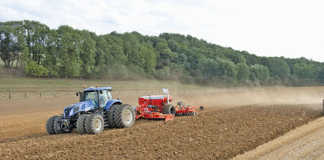
Carrots are small and vulnerable during the early growth stage. Weeds grow quickly and are likely to smother the young carrot plants, depriving them of water and nutrients. Weeds need to be controlled from the start of production. Chemical control of weeds, supplemented with mechanical and/or hand weeding, is the general practice. The following herbicides (and their brand names) are registered for use on carrots in South Africa:
Fluazifop-P-butyl (Grasses or Fusilade Super):
- Sprayed over the crop as an early post-emergent control measure for many annual and perennial grasses. Dosage depends on the grass species and stage of growth – young weeds need lower dosages.
Flurochloridone (Racer):
- Applied as soon as possible after sowing. It controls a wide range of broadleaf weeds. Residual action which can last up to six months can damage susceptible crops grown later, so it’s not recommended where vegetables are rapidly rotated.
Haloxyfop-R-methyl ester (Gallant Super or Verdict Super):
- Used post-emergent to control annual and perennial grasses. Dosage depends on the dominant grass. Early application is best.
Prometryn (Gesagard500):
- Controls annual broadleaf weeds. Applied early in crop growth when the carrots have developed several true leaves.
Propaquizafop (Agil 100 EC):
- Applied post-emergent for control of annual grasses. Dosage depends on the grasses present and the growth stage.
Trifluralin (Digermin, Trifluralin and Triflurex):
- Applied from three weeks to immediately before sowing. Must be mechanically incorporated within 10 minutes of application. Used mainly against annual grasses, but will also control a few broadleaf weeds. Has a long residual action which can damage susceptible crops grown later in the rotation.
Herbicide for carrots
Linuron (sold as Afalon SC or Linex 4F) controls a range of annual broadleaf weeds, as well as certain annual grasses, and is probably the most widely used herbicide on carrots. It can be applied pre-emergent, immediately after sowing, to a fine, moist seedbed (seed should be sown not less than 12,5mm deep). Dosage depends on the clay content of the soil. It may also be used post-emergent, after the crop has reached the 4-leaf stage.
Dosage depends on the growth stage of the weeds. Post-emergent applications are not as effective with certain weed species as pre-emergent use, particularly on older weeds. Post-emergent sprays can be a useful option on wind-blown soil. Here, emerged weeds offer some protection to the delicate crop plants, which won’t happen if linuron is used pre-emergent.













